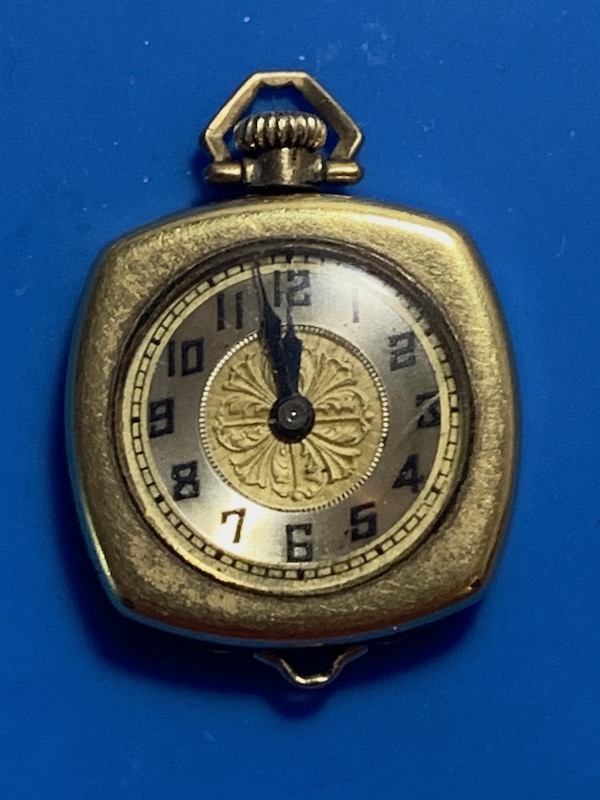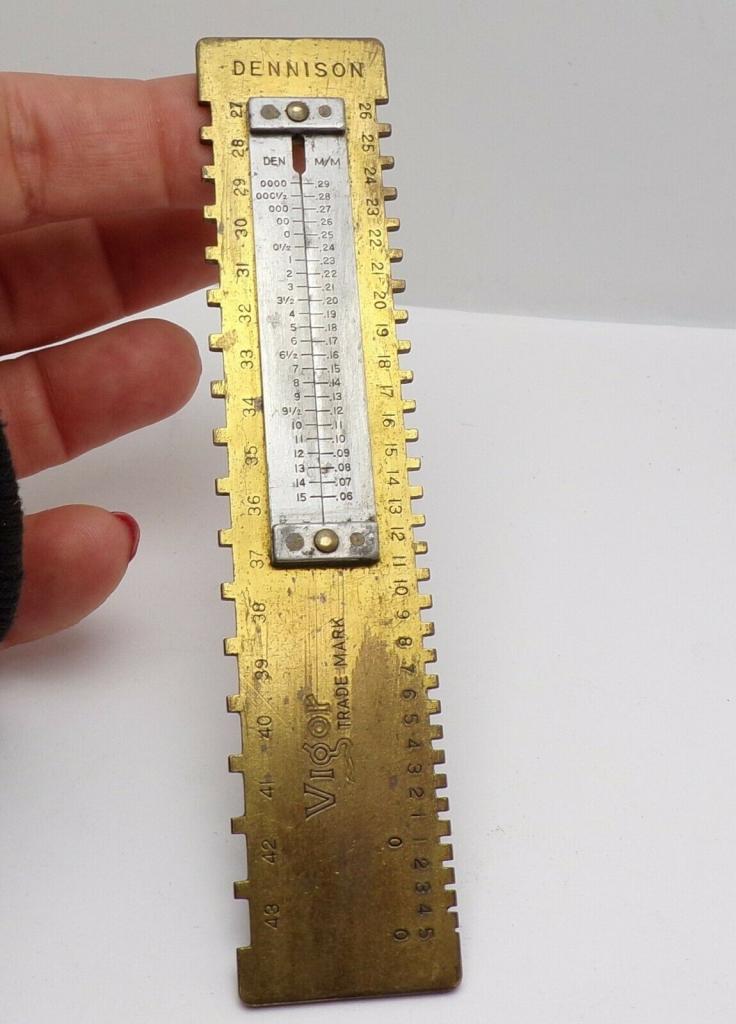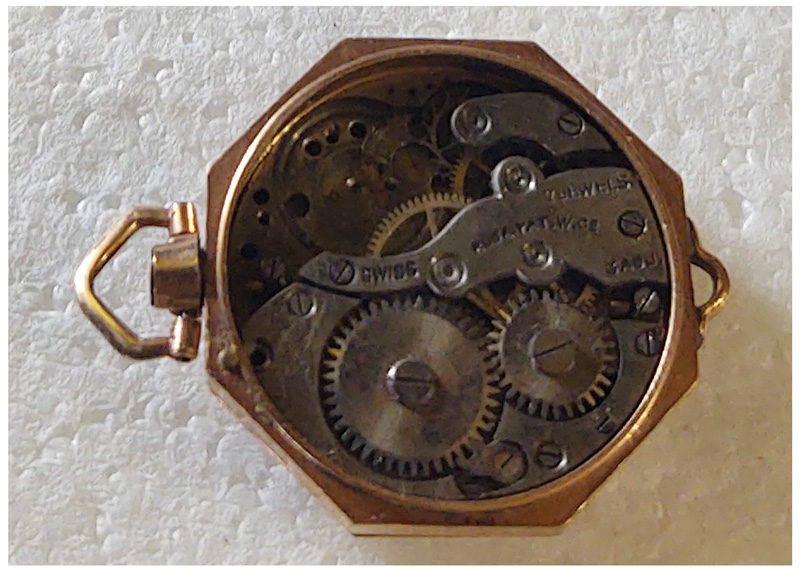This early one is a very nice example. It is a beautiful unengraved 14kt yellow gold filled case. The dial has a silver outer ring with engraved yellow gold center and blued hands. The movement is marked only Rubaiyat Swiss 3Adj 15 Jewels. Below the balance is a trapazoid sheild with the number 42. Based on the American Standard Globe caseback markings and serial number I believe this is dated to 1921. I suspect this is a 1921 Bulova Rubaiyat. It has a broken mainspring so if any has or knows what main will fit this watch, I would appreciate it.



Dear JimDon5822, a very nice watch you have there and definitively an early example of the J. Bulova company. As we have established already, Rubaiyat was a brand filed by the J. Bulova Company as early as 2 January 1917. Meanwhile I have over 200 of these early examples in my database and the statistics of that database suggest that the movement of your watch is older than the case. The movement, signed only with RUBAIYAT, typically appears in examples like this one: https://mybulova.com/watches/1917-rubaiyat-8815 having a case signature that pre-dates the globe signature and always have Rubaiyat on the dial. That likely dates the movement to 1917-1919. After that, the movement signature changes to RUBAIYAT W. CO. The watch case has the globe signature that according to my estimations likely is from 1921. As said, all is based on a database of over 200 units. Hopefully more examples will show up in the future to enrich the database and corroborate these early conclusions.
It's my take that cases with the following case back were 1915 -1919.

I'm still not 100% certain when the Glode was introduced, but it is still my take that it's 1920. The earliest Globe stamped case that has been date engraved 1920 (that I've recorded) had a serial number of 1006919.
Based on how Bulova dated their early watches 11xxxxx 12xxxxx, 13xxxxx, 14xxxxx, 15xxxxx, 5xxxxxx 6xxxxxx, etc, I'm still inclined at this stage to use the KISS principle and say that 10xxxxx stood for 1920. This may not neccessarily mean they 'sold' in 1920, but were manufactuted in 1920.
Hopefully one day we do find some nice evidence (a repair receipt or similar) to really show when the earliest 10xxxxx stamping was used.
Although with all that said I could be 100% wrong :-)
Subject watch for me (at this time) would still be a 1920 Bulova Rubaiyat
Concerning the broken mainspring, JimDon, you'll probably have to take it out and measure it with a mainspring gauge like this:

Once you know the width and thickness, you'll need to measure the length and the method used on the end to hook it to the mainspring barrel. Then you can look in the Bulova cross reference book and see if any Bulova model mainsprings matches it. If not, there are several sources where you can order mainsprings by the measurements and hook type. If you don't have one of these tools, you should be able to pick one up for cheap, in the $5-10 range.
In reply to I also believe the case… by FifthAvenueRes…
In reply to Yes I am interested. Thank… by JimDon5822
Here is a (not so good) image of the parts movement I have.

- Unfortunately I do not think it will work: The movement is 7J not 15J.
But, perhaps it could spark some conversation.
The subject watch is simply marked RUBAIYAT whereas the 'parts movement' is marked RUBAIYAT W. Co. much like early Bulova movements simply marked BULOVA and BULOVA W. Co.
IMO, (logically) the movements marked with the additional 'W.Co' will be later production than those marked simply RUBAIYAT or BULOVA.



